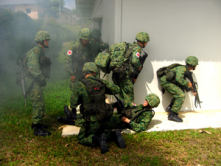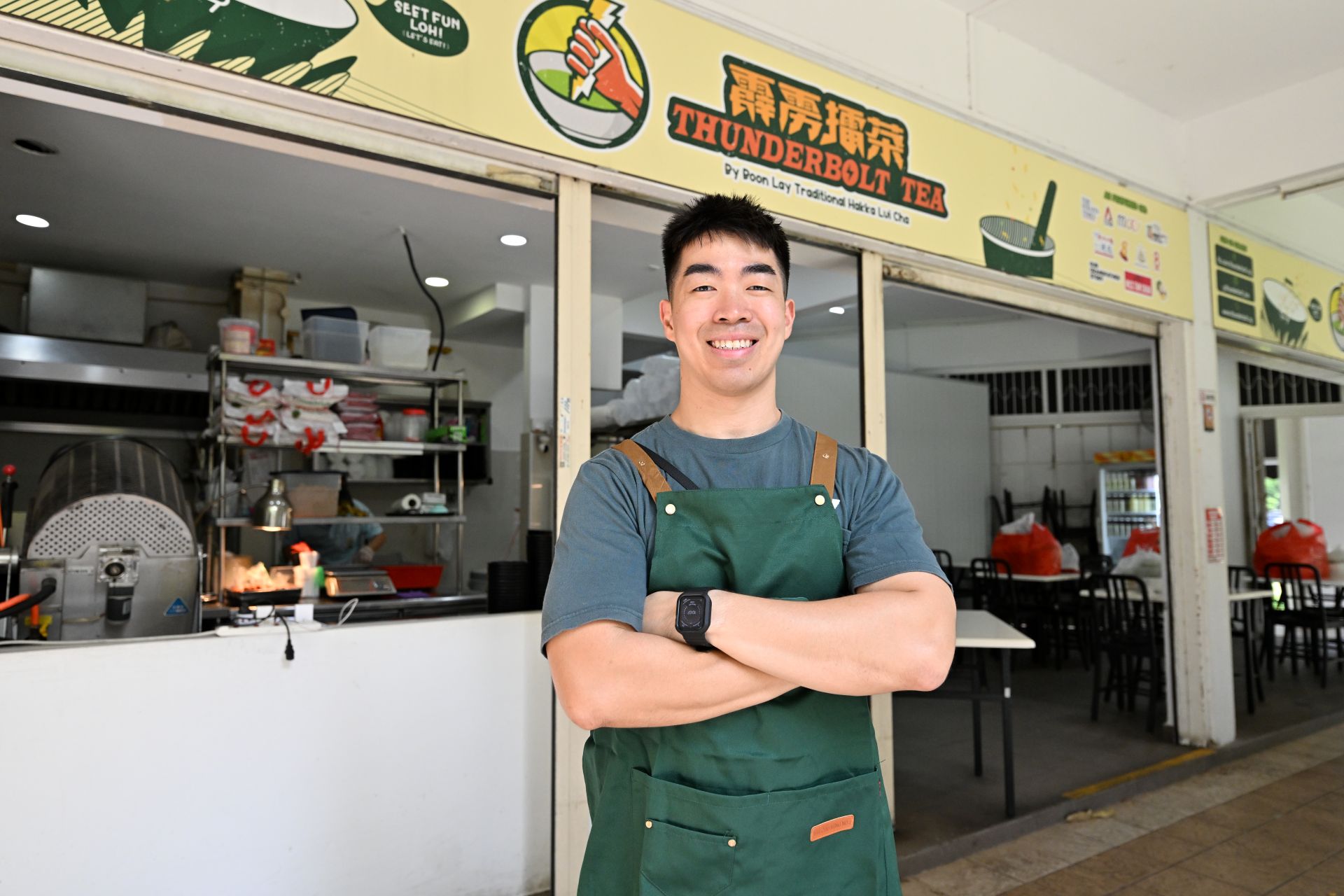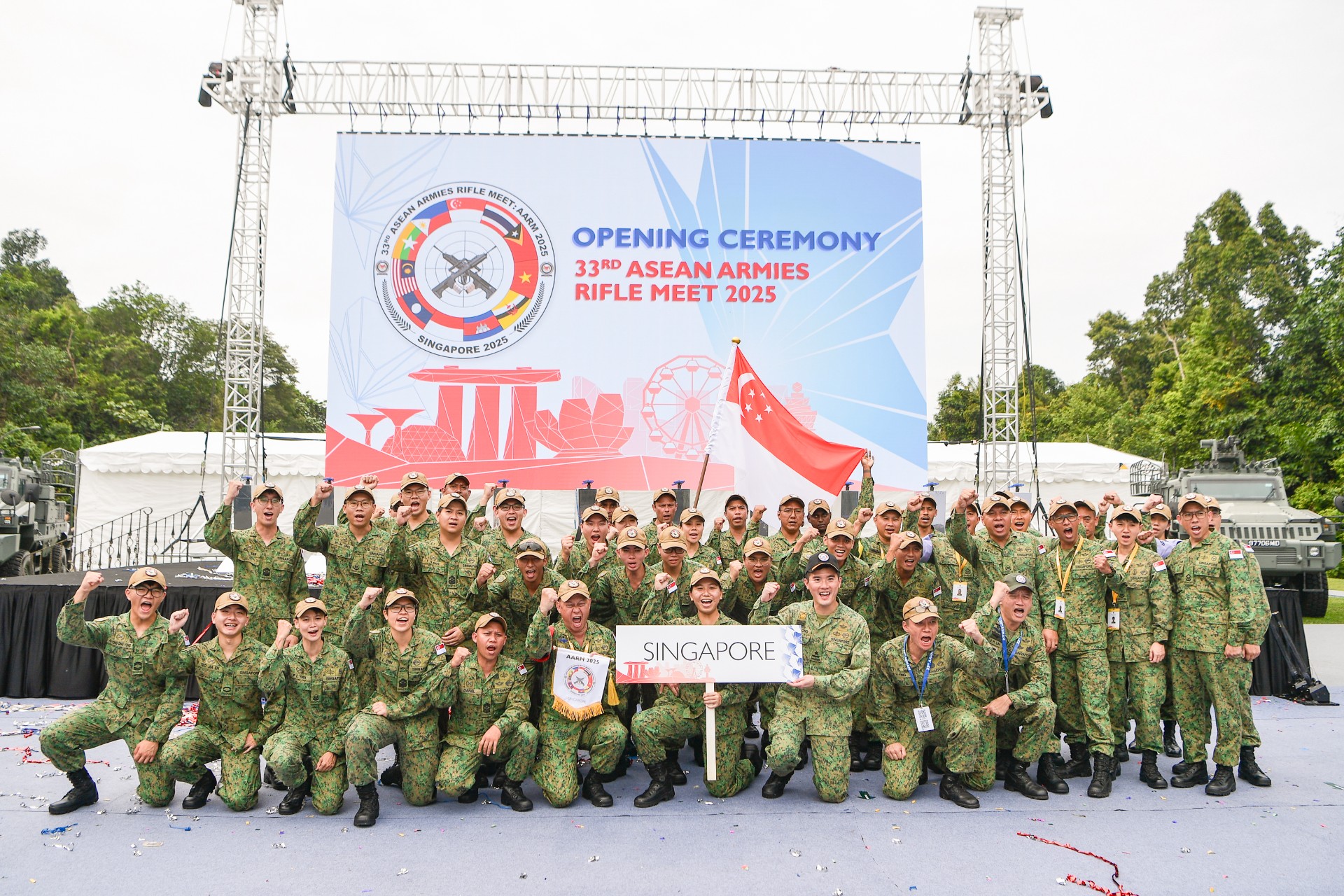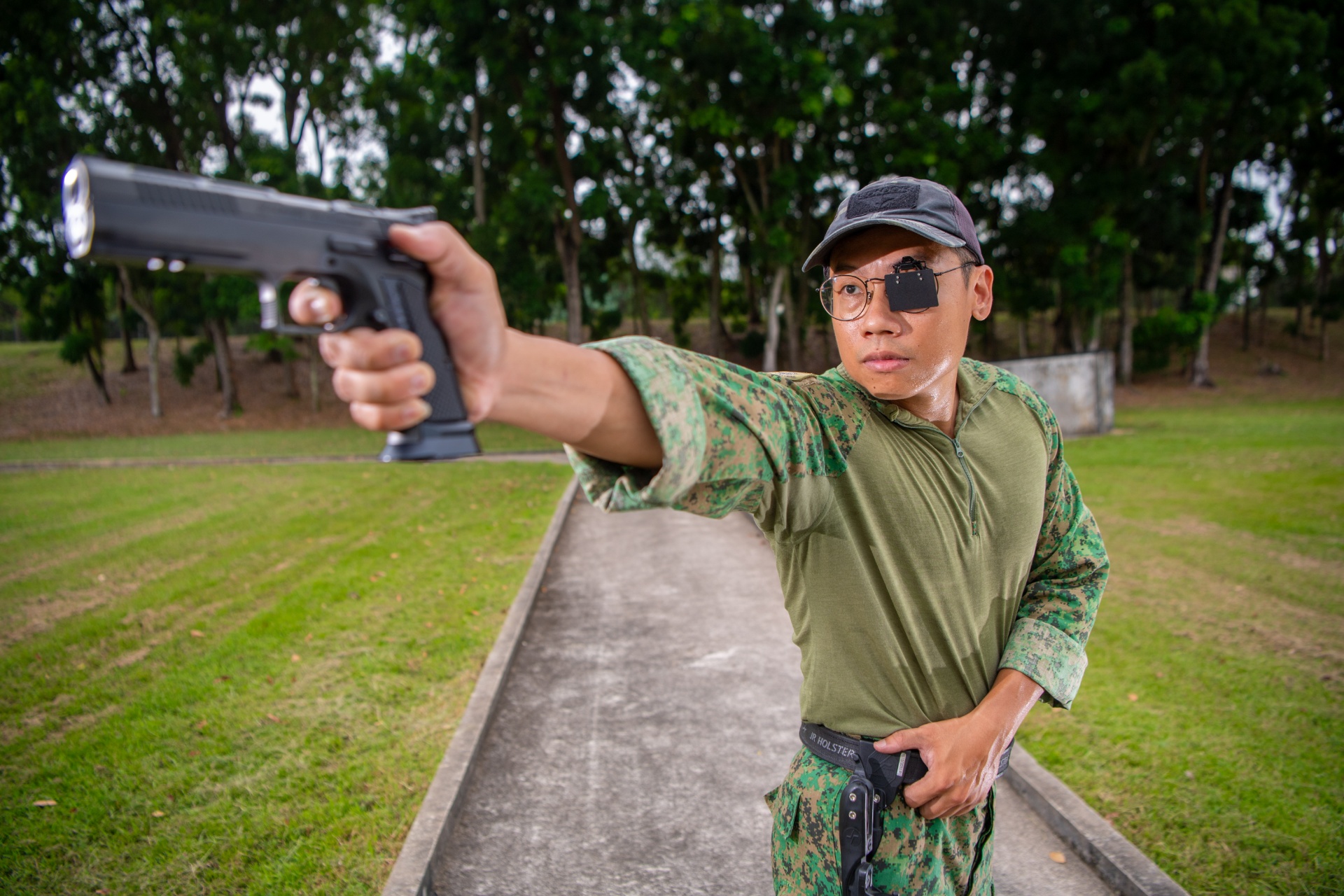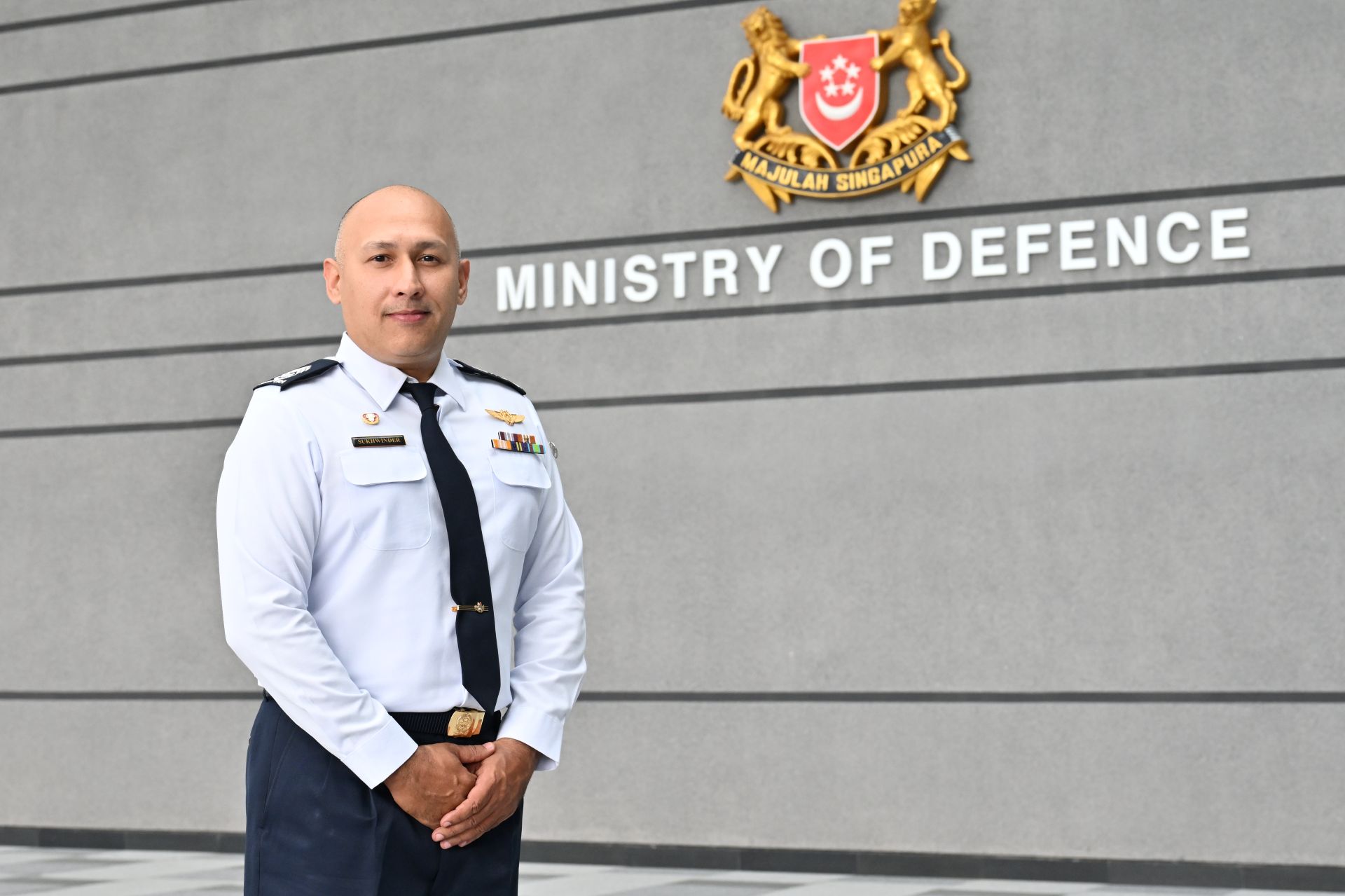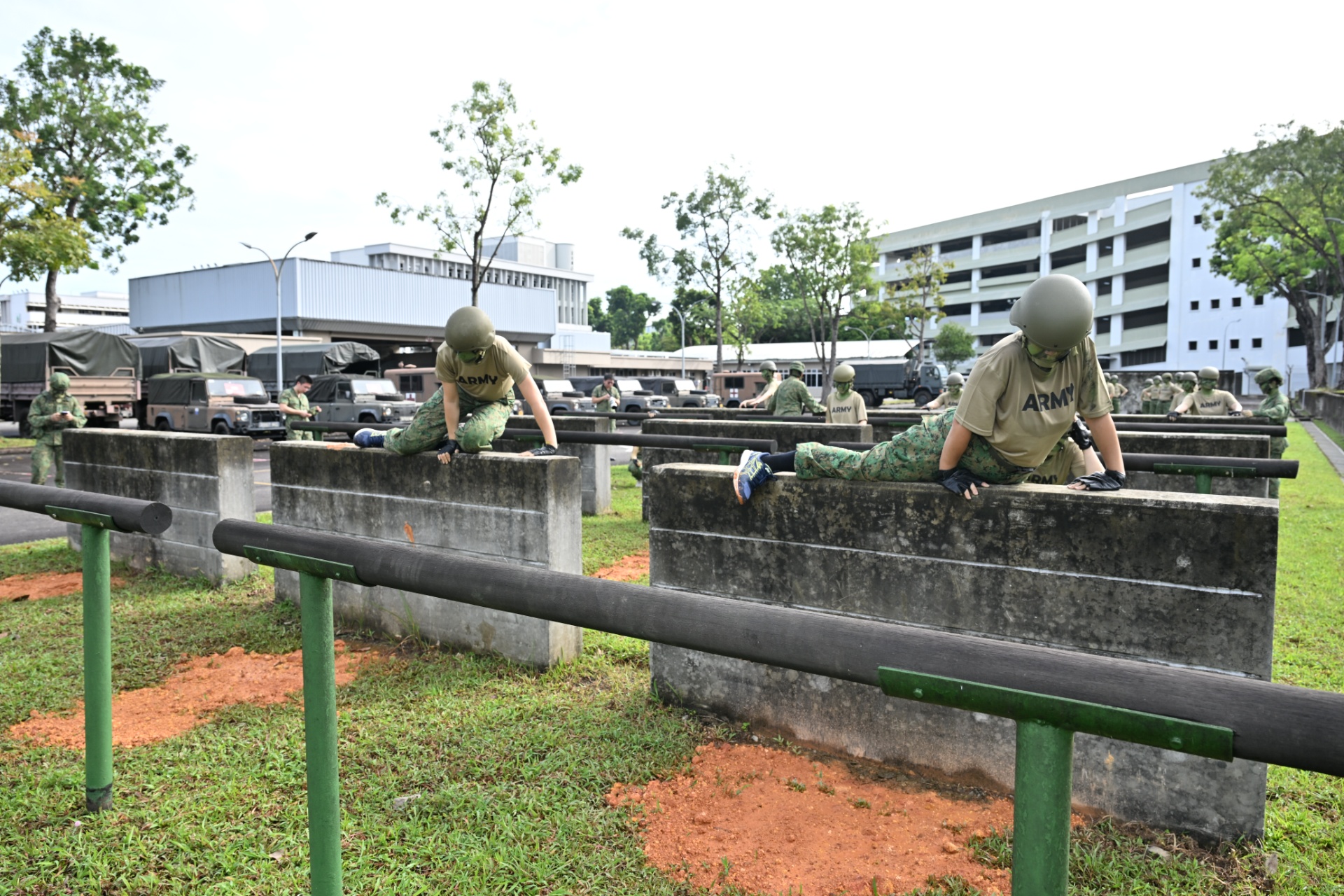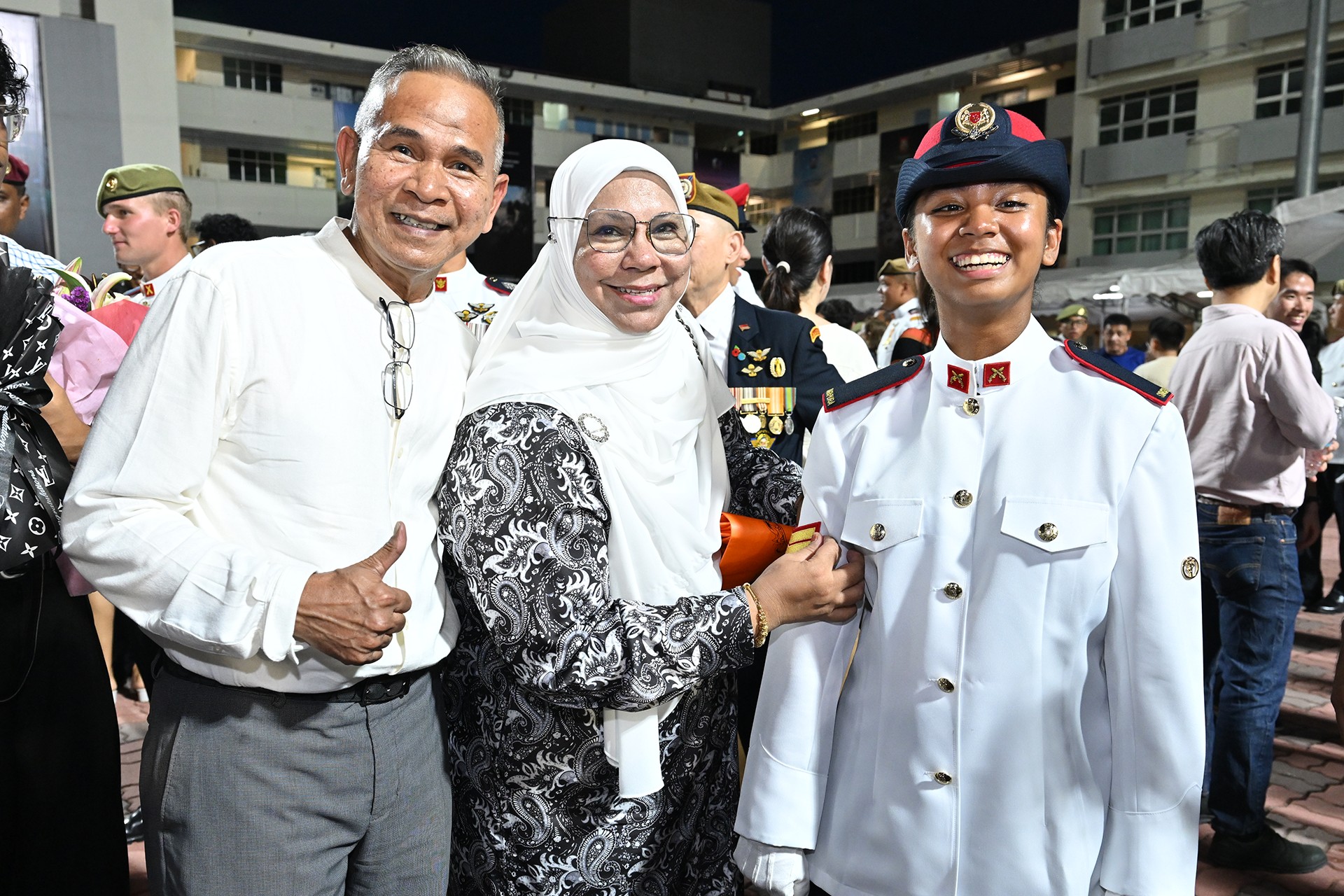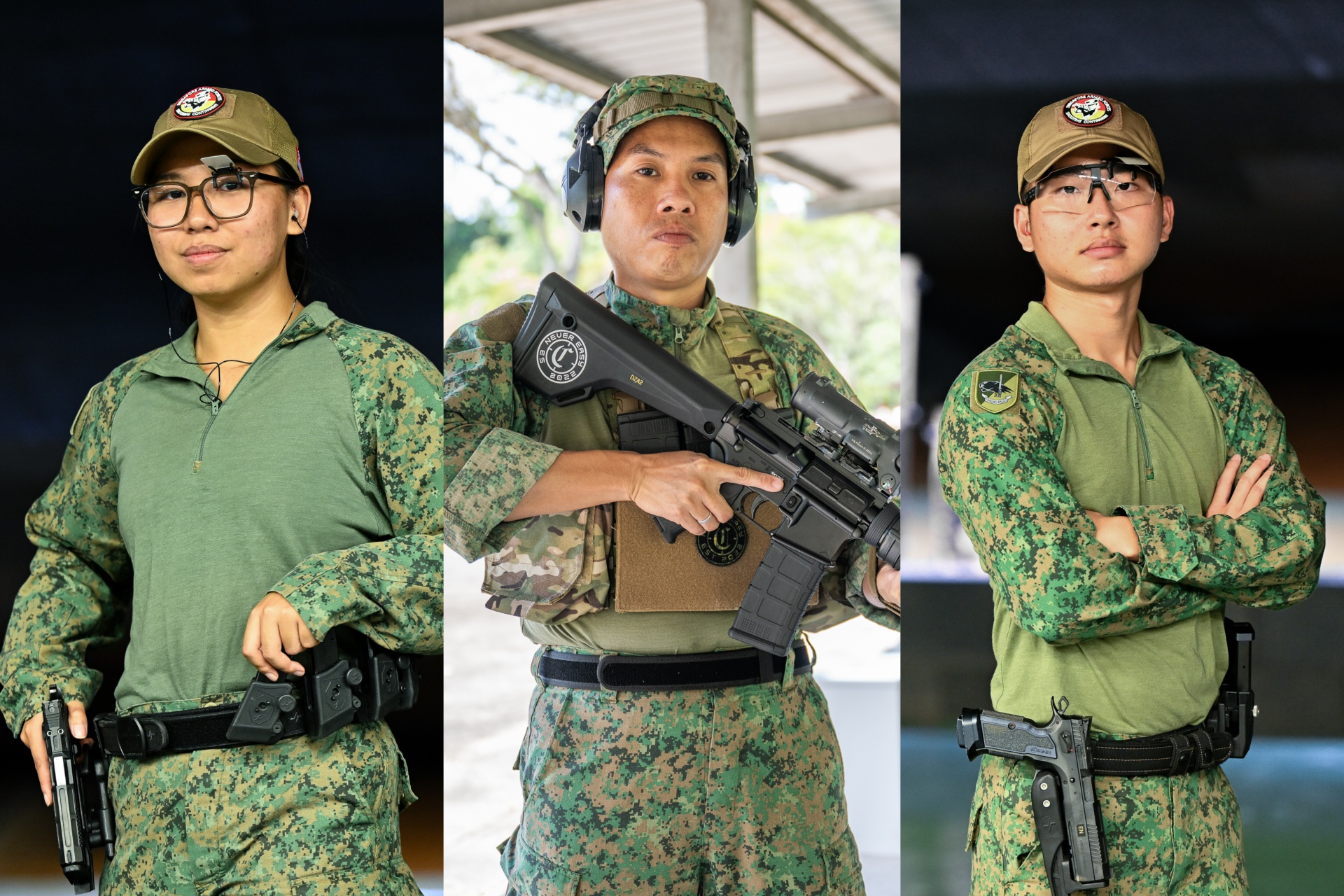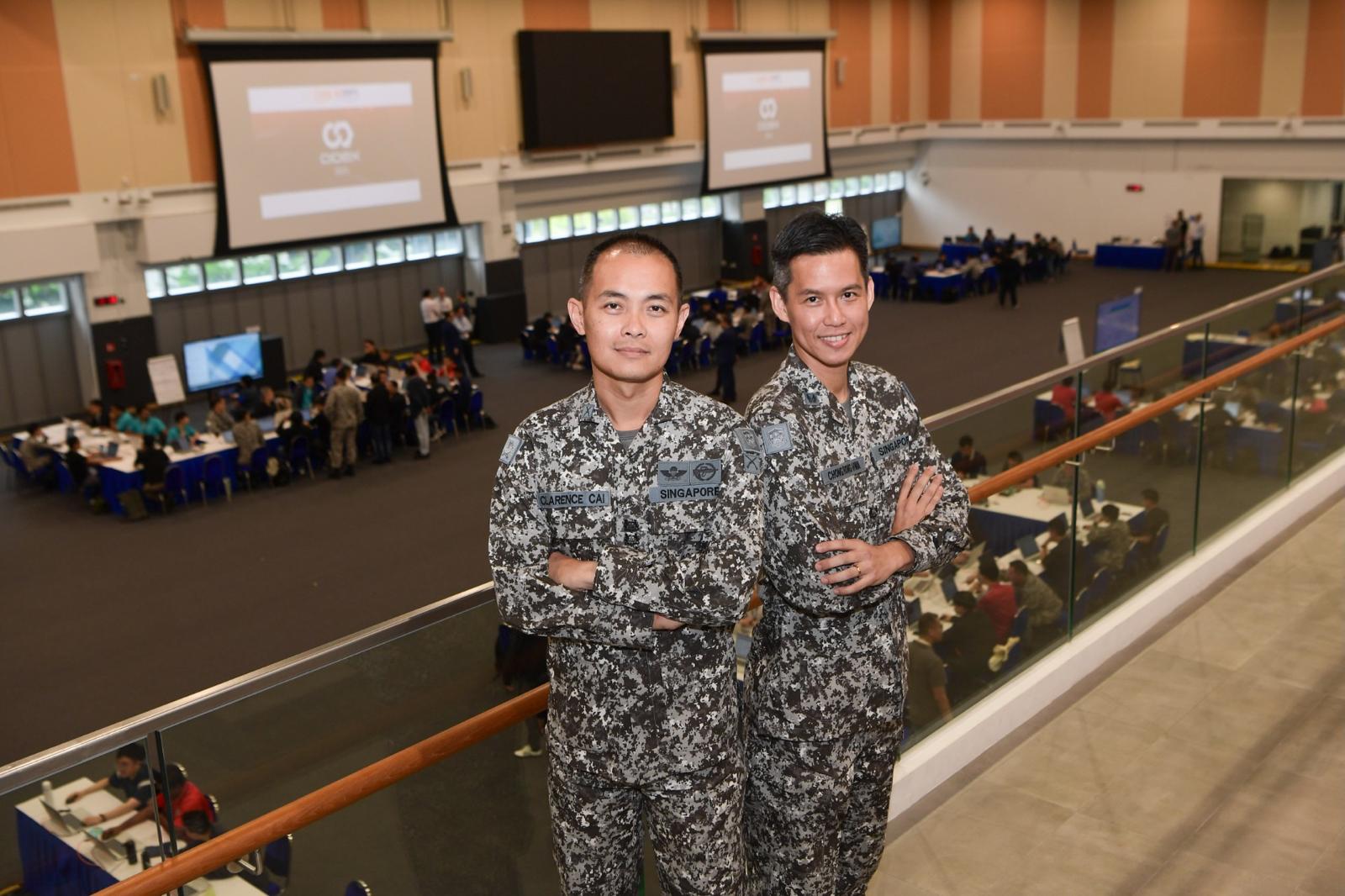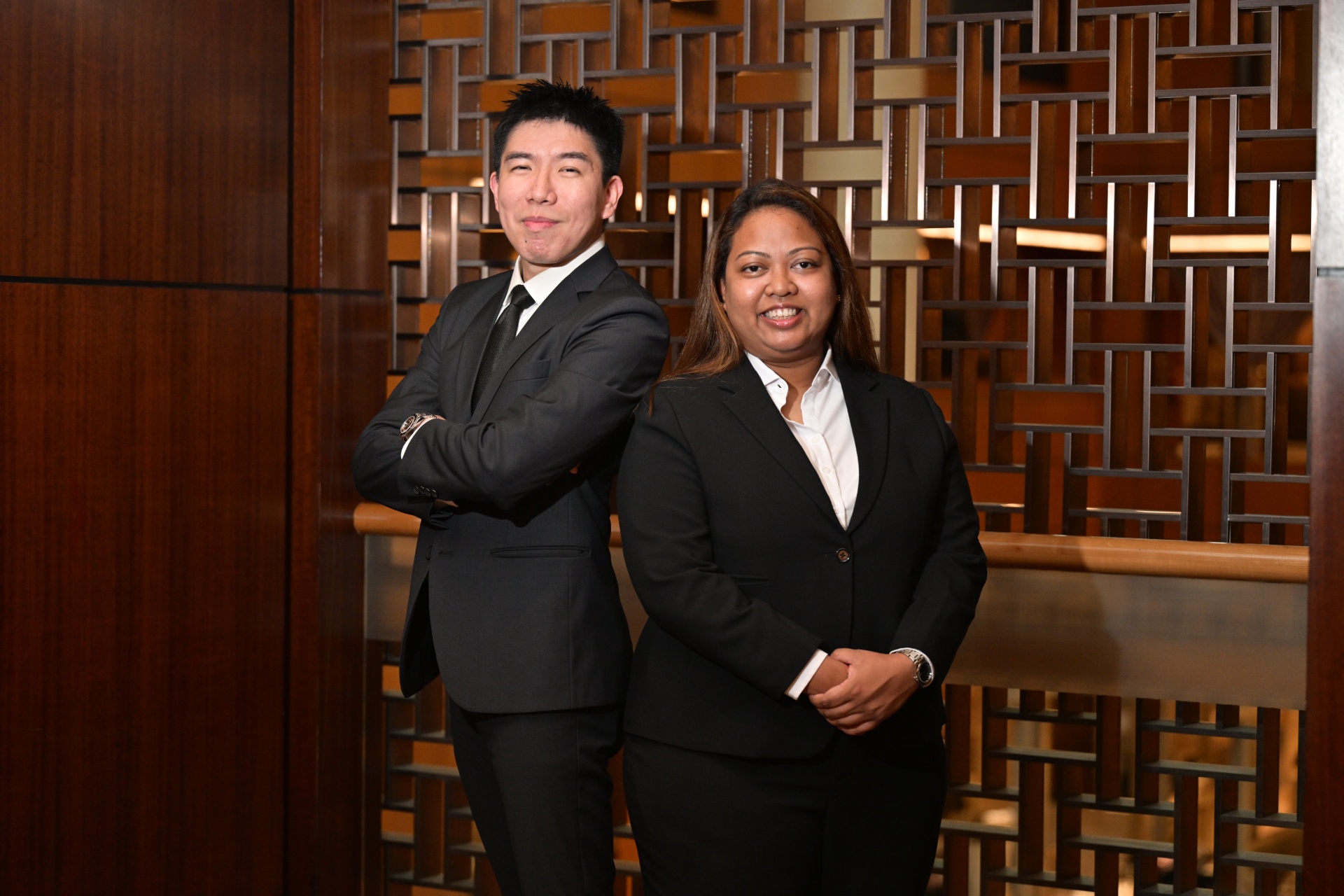DOCTORS AT THE FRONT LINE
PHOTO // Chai Sian Liang and courtesy of 69th MOCC
Your regular doctor is trained through lectures and practical lessons in medical schools, but have you ever wondered how military doctors are trained? PIONEER finds out as we tag along in a recent Medical Officers Cadet Course (MOCC).
Since November 2009, they have been working not in hospitals, but in tents and makeshift shelters. And such are the conditions the 40 doctors who graduated from the recent 69th MOCC, which concluded on 20 Feb, can expect to face as they take their medical practice out of clinics and into the field.
Emphasising the qualities the course aims to develop in SAF Medical Officers (MOs), Chief Army Medical Officer and Commander of SAF Medical Training Institute Lieutenant Colonel (LTC) (Dr) Chua Wei Chong said: "An MO must be clinically competent as a doctor to provide excellent health care to our personnel. He must also have the ability to lead his team in a military environment, be it in the field or a medical centre setting."
The 17-week course trains cadets in military leadership, medical support planning, civil-military relations, urban operations and live firing. Various field exercises are also conducted for the cadets to put into practice what they have learnt.
Major (MAJ) Daniel Chia, Head of the Centre for Military Medicine, who is also the course commander, added: "This intensive training is aimed at preparing cadets for their eventual roles as commanders of Battalion Casualty Stations (BCSs), leaders of medical personnel and medical centres, and staff officers who advise unit commanders on areas pertaining to mental and physical health."
Becoming a soldier-doctor
The primary role of a medical officer in the Singapore Armed Forces (SAF) is to provide medical support in a military setting, explained platoon commander Captain (CPT) (Dr) Kim Guowei, who served as the course instructor.
"Ultimately we are still soldiers, so we have to be proficient in our basic soldiering skills. That's why in the MOCC, we have significant training in field survivability," he added.
During the preparatory term of the MOCC, aimed at training cadets in the fundamentals of being a soldier, trainees go through navigation exercises in the jungle and practise evacuating casualties from the front line back to the battalion level where treatment is available. In each exercise, cadets take turns to hold leadership appointments.
As the modern battlefield moves away from conventional jungle warfare, cadets are also trained to provide medical support in an urban setting. "Unlike jungle warfare, there are civilians in a built-up area. As a military doctor and soldier, you can't just take care of your own soldiers; you have to look out for civilians as well. So we teach cadets the principles of medical support in a built-up area," elaborated CPT (Dr) Kim.
Besides the field exercises, a live helicopter-tasking exercise, where cadets simulate a casualty evacuation using a Chinook helicopter, is conducted.
Considering this to be one of the highlights of the MOCC, Officer Cadet (OCT) (Dr) Sivaraj Gunasekaran said: "It's not as simple as just calling for a helicopter. We had to set up a site in the jungle for the helicopter to land, and we also had to run through a lot of safety procedures. It's good that I got to experience this live tasking, because it's something I probably will never learn while training to be a civilian doctor."
Learning military medicine
Besides undergoing military training, cadets receive professional medical training through a two-week attachment to medical centres in SAF units. They also go through a medical professional term where they will be exposed to professional medical courses, such as Advanced Trauma Life Support (ATLS), Advanced Cardiac Life Support, Emergency Medicine and Family Medicine courses.
"This professional term focuses on clinical competencies. It prepares cadets to run medical centres in future, and equips them with the knowledge and skills that they need to handle mass trauma casualty situations or difficult medical cases," said MAJ Chia.
At the ATLS course, cadets are taught the A, B, C, D, E algorithm to treat trauma patients, defined as patients suffering from serious bodily injuries or shock, as a result of violence or accidents. Explaining that the letters represent Airway, Breathing, Circulation, Disability and Exposure, course director LTC (NS) (Dr) Imran Nawaz, who is a surgical clinical trainer at Headquarters Army Medical Services, said: "We teach course participants to focus on these five areas to keep the patient alive, long enough for the patient to be transferred to a specialised unit for further treatment."
Cadets like OCT (Dr) Chok Aik Yong found what was taught in the ATLS course to be very helpful. "Sometimes when we're treating a patient who is deteriorating fast, the five steps help us organise our thoughts and form a good framework for us to remember what to do during emergencies."
In stark contrast to the 2nd Generation BCS (below), the 3rd Generation BCS (above) is more spacious and equipped with more advanced medical equipment.
Using 3rd Generation gear
As part of efforts to raise health-care standards in the SAF, this batch of cadets was the first to undergo training with 3rd Generation medical equipment such as automated ventilators that assist patients in breathing and patient monitors that keep track of patients' vital signs.
In addition, they had the chance to operate the new BCS platform, which is mounted on a five-tonner that can be mechanically opened up on both sides to form a shelter. Installed with the latest medical equipment mentioned above, the BCS, which is usually located close to the front line, provides Accident and Emergency (A&E) capabilities.
On the benefits of the 3rd Generation equipment, MAJ Chia said that it improved efficiency as the previous BCS depended more heavily on manpower during deployment and operations.
CPT (Dr) Kim added: "The new BCS also offers more space to do life-saving procedures, compared to its predecessor, which was a tent. Ultimately, the use of more advanced medical equipment helps to increase the standard of health care, especially in a combat setting."
Overcoming physical challenges
On what was challenging about the MOCC, the cadets unanimously agreed that it was the physical aspect, where they had numerous route marches and physical training.
Explaining why, OCT (Dr) Sivaraj said: "Many of us did our BMT (Basic Military Training) before we disrupted our NS (National Service) to study in medical school. So it's about six years spent studying and then working in hospitals. That's why initially I found it very hard to readjust to the regimentation and fitness level required of me."
He added: "But as the whole course is geared towards building us up gradually... now I believe our fitness levels have improved a lot, and that helps us function better as military doctors."
Attesting to the cadets' improved fitness level, CPT (Dr) Kim said: "Cadets have to pass their IPPT (Individual Physical Proficiency Test) to be commissioned as officers. About a third of them achieved the gold standard so that's a good achievement."
Bonding to be stronger
While the physical aspect of the course was tough, it helped to bond the cadets together and brought out their best, said OCT (Dr) Koh Ye Xin, who was awarded the Best Cadet of the 69th MOCC.
"I enjoyed the tougher activities because that's when you can see the true character of a person."
He elaborated: "For example, I fell down during one of the 5km route marches and one of my course mates helped me to carry my field pack. Even during the 10km, 16km and 24km route marches, there were always people helping to share others' loads."
Looking back on his experiences after completing the last field exercise, OCT (Dr) Koh said: "What I feel really proud of at the end of the MOCC is how we helped to make up for each other's inadequacies without any complaints - that's what real friends do."
Ready to lead
Marking the end of the MOCC was a commissioning ceremony on 17 Feb, where the 40 new officers were presented their swords and certificates by then Chief of Defence Force Lieutenant-General(LG) Desmond Kuek.
The training may have ended, but the skills and knowledge gained and the camaraderie formed during the MOCC will stay with the new officers and be the foundation they build on in their future postings.
Summing up the course, LTC (Dr) Chua said, "I am proud that this batch of cadets has excelled both as military officers and professional doctors. As they embark on their journey as SAF medical officers in the next one and a half years, I am sure that they will uphold the core values of the SAF and provide compassionate care to all our servicemen and women."
